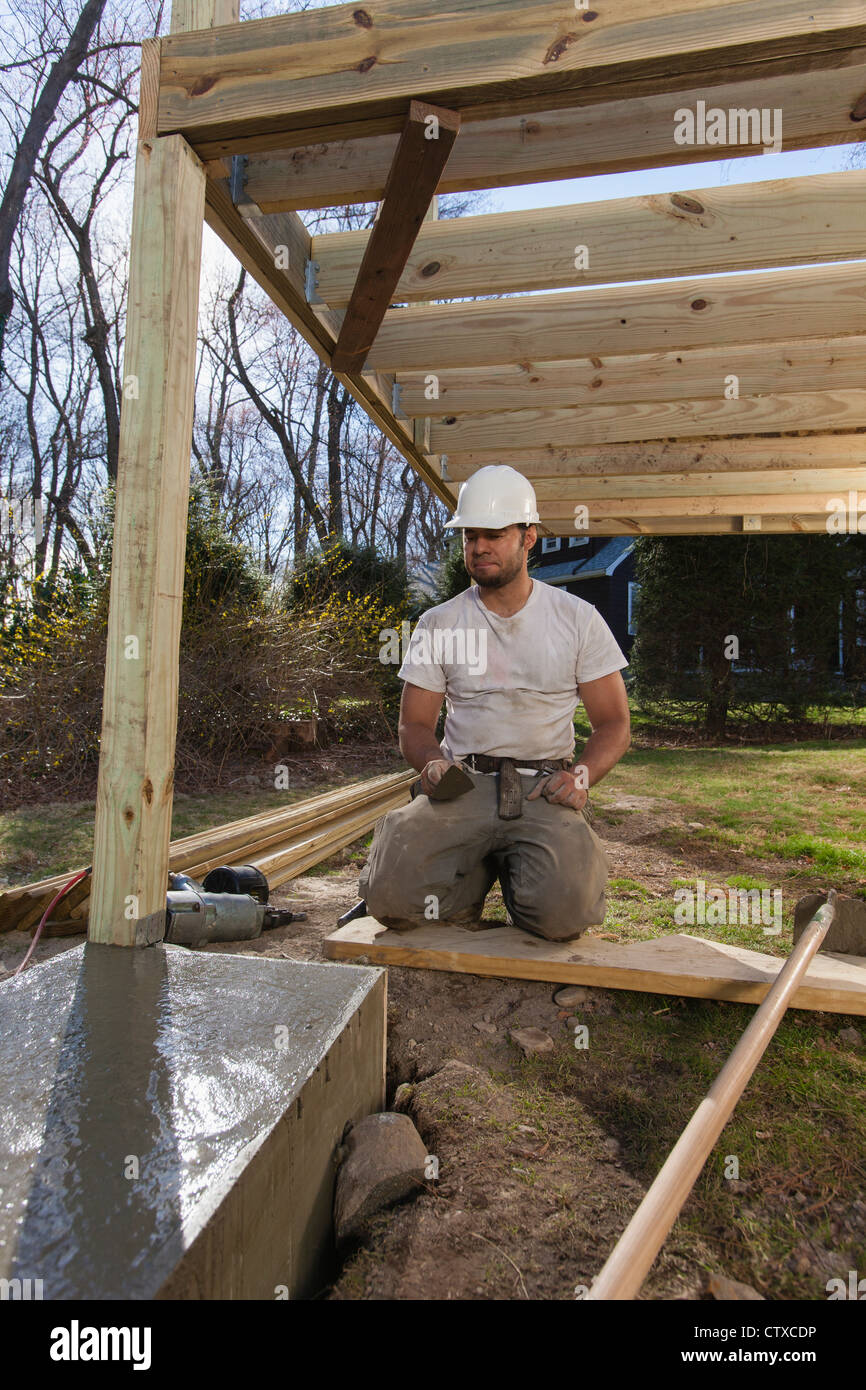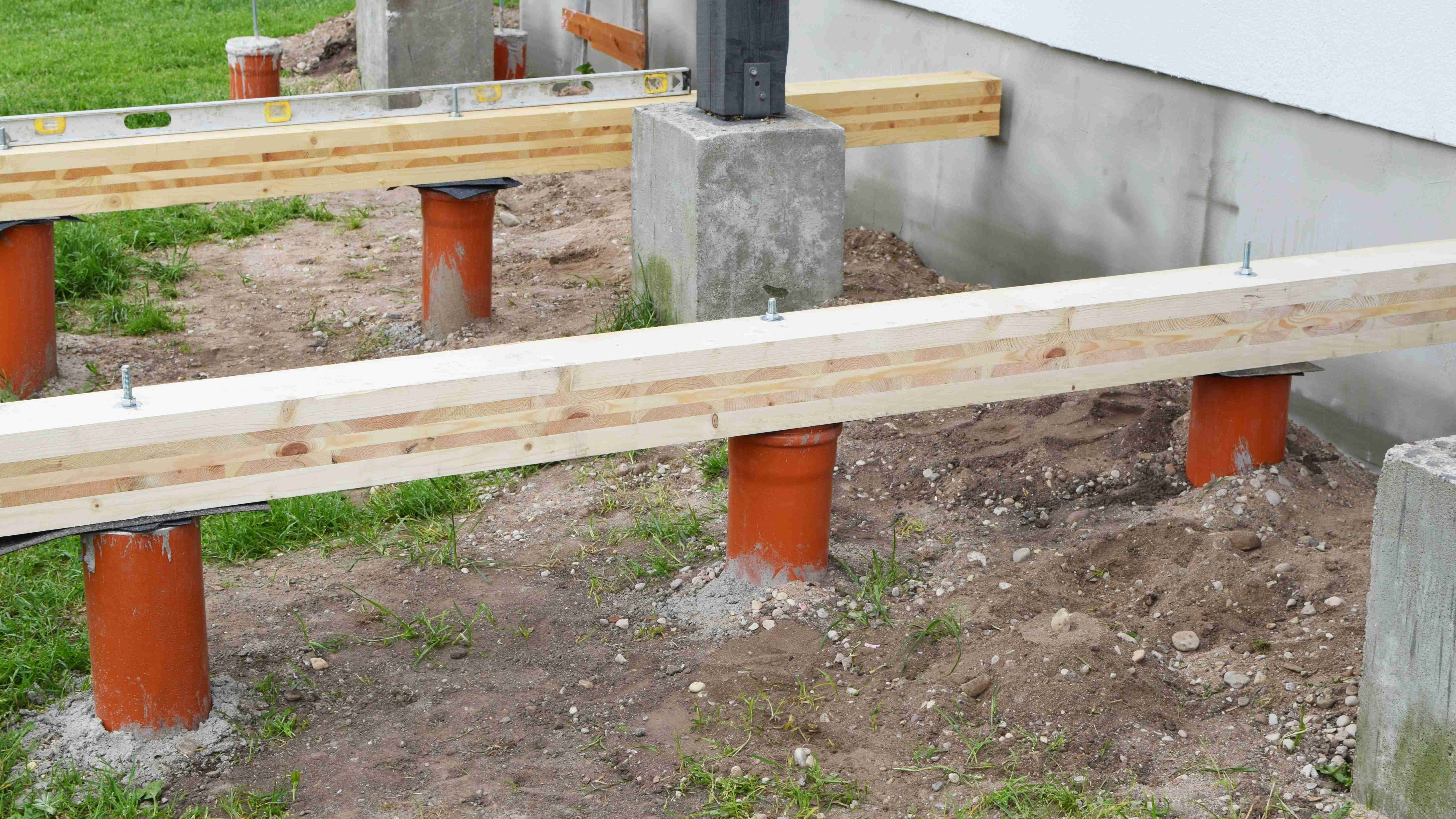From Concept to Concrete: The Crucial Duty of Deck Footings in Sturdy and Safe Decks
Wiki Article
Choosing the Right Deck Footings for Stability and Longevity
When it pertains to building a deck, one of the most vital decisions you will make is picking the best footings for security and longevity. The long life and safety and security of your deck depend greatly on the kind of grounds you pick, as they provide the necessary support and security to hold up against the examination of time. With a myriad of options available, it can be overwhelming to establish which footings are best matched for your particular requirements. In this discussion, we will certainly discover the numerous kinds of deck grounds, take into consideration the vital aspects to consider when deciding, and explore the pros and cons of various alternatives. By the end, you will certainly have a more clear understanding of the choices at hand and be much better outfitted to make an informed decision for your deck project.Kinds Of Deck Grounds
There are numerous kinds of deck grounds that can be utilized, each offering distinct advantages and considerations. One usual sort of ground is the concrete pier footing. These footings are composed of a cylindrical hole full of concrete, which provides a solid foundation for the deck articles. Concrete pier grounds are fairly easy to install and use superb security, making them a preferred selection for lots of deck jobs.These grounds are mounted by screwing them into the ground, which creates a safe and secure foundation for the deck. They also enable for very easy adjustment and leveling of the deck if needed.
Additionally, some builders select precast concrete grounds. These footings are made of resilient concrete and come in various sizes and shapes to suit various deck designs. Precast concrete grounds are convenient to mount and supply a secure base for the deck structure.
Finally, another choice is the post-in-anchor footing system. This sort of footing involves driving a steel anchor right into the ground and affixing it to the deck message. It offers adaptability in regards to positioning the deck articles and is suitable for decks with lightweight frameworks.
When choosing the ideal type of deck footing, it is necessary to think about aspects such as dirt problems, deck tons, and local building regulations (Deck Footings). Consulting with an expert contractor or architectural engineer can help make sure the ideal ground is picked for a safe and steady deck
Elements to Think About When Selecting Footings
When selecting the suitable grounds for a deck, it is vital to meticulously take into consideration various elements such as dirt problems, deck load, and adherence to regional building regulations. These factors play a significant function in ensuring the stability and sturdiness of the deck structure.The kind of soil on which the deck will be developed establishes the kind of footings needed. On the other hand, decks developed on clay or large soils may need footings that can fit the soil's propensity to expand and agreement.
Another essential factor is the deck lots. The weight of the deck, consisting of the materials used and any potential real-time loads such as furniture or gatherings, have to be taken into consideration when choosing grounds. The footings have to be designed to birth the weight of the deck and distribute it evenly to avoid any kind of architectural issues or failures.
Finally, adherence to neighborhood building ordinance is vital. Building ordinance differ from region to region, and it is important to follow the certain demands set by the regional authorities. check here Deck Footings. These codes make sure content that the deck is constructed securely and fulfills the required criteria for structural stability and load-bearing capacity
Concrete Footings: Pros and Cons

Concrete grounds provide several benefits and drawbacks when utilized as the foundation for a deck. On the favorable side, concrete grounds give superb stability and sturdiness.
An additional advantage of concrete grounds is their flexibility. They can be poured right into various sizes and shapes to suit numerous deck layouts and setups. Concrete grounds can be customized to fit the specific requirements and demands of the deck structure.
Nevertheless, there are additionally some drawbacks to making use of concrete grounds. One major negative aspect is the expense and labor involved in their installment. Concrete footings need excavation and typically require the aid of heavy equipment. This can enhance the overall expense of the deck project and might require specialist aid.

Helical Piers Vs. Sonotubes: Which Is Much better?
In taking into consideration the foundation alternatives for a deck, the contrast between helical piers and sonotubes is critical in figuring out the remarkable selection. Helical piers, also understood as screw stacks, are steel shafts with helical plates affixed to them. They are twisted into the ground making use of hydraulic machinery, supplying a steady and resilient foundation for the deck. On his comment is here the various other hand, sonotubes are round kinds made of cardboard or fiber material that are full of concrete. They are placed in an opening went into the ground and offer support for the deck.The helical plates on the piers produce a strong hold with the soil, moving or avoiding any activity of the deck. Sonotubes, on the other hand, rely exclusively on the concrete filling up for stability, which might not use the exact same degree of toughness and resistance.
In regards to setup, helical piers are relatively simpler and faster to install compared to sonotubes. The hydraulic equipment made use of to twist the piers into the ground ensures a efficient and quick process. Sonotubes, on the other hand, call for excavating openings and putting concrete, which can be taxing and labor-intensive.
Additionally, helical piers are a more functional choice. They can be used in various dirt conditions and can be changed or reinforced if required. Sonotubes, on the various other hand, may require extra support, such as rebar, in particular dirt conditions or areas with high lots needs.
Selecting the Right Footings for Your Deck's Measurements
For ideal architectural honesty, it is important to thoroughly select the appropriate grounds that straighten with the measurements of your deck. The dimensions of your deck, including its width, height, and length, play a significant duty in figuring out the kind and dimension of grounds required.When picking footings for your deck, it is very important to consider the load-bearing capacity of the soil. The weight of the deck, combined with the weight of any type of furnishings or individuals on it, puts in a significant force on the grounds (Deck Footings). It is crucial to pick grounds that can adequately support this weight without sinking or changing over time.
Larger decks with better measurements require bigger grounds to provide sufficient security and support. The form of the footings, whether they are square or round, depends on the style and design of the deck.
Final Thought
In verdict, selecting the appropriate deck grounds is critical for ensuring stability and sturdiness. Aspects such as the kind of grounds, the deck's measurements, and the advantages and disadvantages of various choices must be taken into consideration. Concrete grounds provide stamina and longevity, but may be much more pricey and taxing to install. Helical piers and sonotubes have their own advantages and negative aspects. Inevitably, choosing the suitable footings for your deck's details requirements is vital for a durable and effective structure.These footings consist of a round hole filled with concrete, which offers a solid foundation for the deck posts. Concrete pier footings are reasonably easy to install and supply excellent stability, making them a popular choice for numerous deck tasks.
Precast concrete footings are convenient to mount and offer a steady base for the deck framework.
It provides versatility in terms of positioning the deck articles and is appropriate for decks with light-weight structures.
Concrete grounds use several benefits and downsides when made use of as the structure for a deck.
Report this wiki page